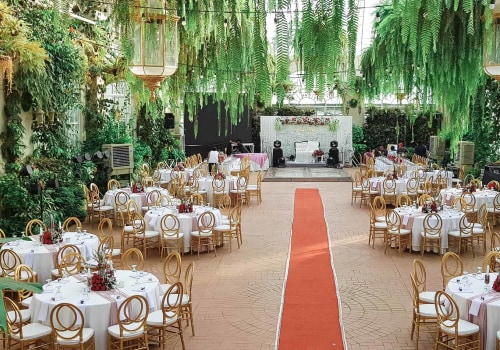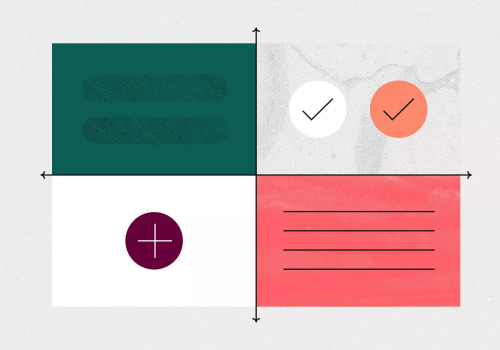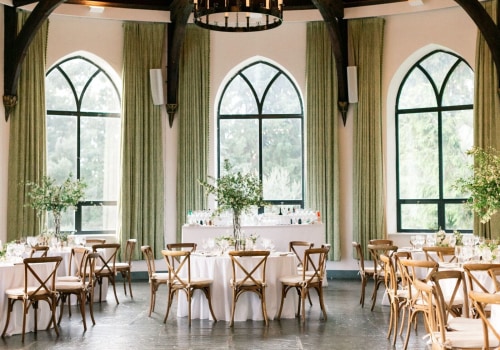No matter what your body shape or size, a wedding dress should be the perfect fit for your special day. But with so many different types of dresses on the market, it can be difficult to find the perfect one that fits you perfectly. That's where alterations come in. By making common adjustments to a wedding dress, you can ensure that it fits you like a glove and looks stunning on your big day. Whether you're looking to alter a dress you already own, or are purchasing one from a store, this guide will provide all the information you need to know about the various alterations that are available and how to go about getting them done.
Read on to learn more about common alterations to wedding dresses.
Alterations to Wedding Dresses
: When it comes to your wedding dress, there's no such thing as one size fits all. It's likely that you'll need to make some alterations in order to get the perfect fit. This could include anything from hemming and resizing to adding straps or sleeves. In this article, we'll cover all the common alterations to wedding dresses and provide tips and advice on how to find the perfect fit. The most common alterations you can make to a wedding dress are hemming, resizing, and adding straps or sleeves.Hemming is the process of adjusting the length of a dress by cutting off some of the fabric at the bottom. Resizing is the process of adjusting the waist, bust, or hip measurements of the dress so that it fits your body perfectly. Adding straps or sleeves is a great way to transform a strapless dress into something more modest. Finding the perfect fit for your wedding dress doesn't have to be difficult.
A skilled tailor or seamstress can help you make any necessary alterations so that your dress looks and feels amazing on your special day. They can also help you determine which alterations need to be made in order to achieve the look you want. When working with a tailor or seamstress, it's important to bring along a few items such as a photo of your desired look, a pair of shoes with the same heel height as what you plan to wear on your wedding day, and any fabric swatches that you may have. The cost of alterations will vary depending on the type and complexity of the work. Generally speaking, hemming and resizing are less expensive than adding straps or sleeves.
Additionally, if you are working with an experienced tailor or seamstress, they may be able to provide you with an estimate for the cost of your alterations. It's also important to factor in time frames when planning for alterations. Most tailors and seamstresses will need at least two weeks to complete the work, but it may take longer depending on the complexity of the job. In conclusion, when it comes to altering a wedding dress there are several things to consider such as types of alterations, cost of alterations, time frames, and how to find the perfect fit. It's important to work with a skilled tailor or seamstress who can help you determine which alterations need to be made and provide you with an estimate for the cost of those alterations.
With their help, you'll be able to find the perfect fit for your wedding dress.
Cost & Time Frame for Alterations
When it comes to alterations for wedding dresses, the cost will vary depending on what type of changes you need to make. Generally, the more detailed and complex the alteration is, the more expensive it will be. Tailors and seamstresses may charge by the hour or by the project. It's best to ask for an estimate before committing to any alterations.In terms of time frame, it may take a few weeks or more for the alterations to be completed, depending on the complexity of the project. It's important to give yourself enough time to get your dress altered before the big day. It's recommended to start looking for a tailor or seamstress at least four months in advance. When choosing a tailor or seamstress for your wedding dress alterations, it's important to do your research.
Check out reviews online and ask friends for recommendations. You should also inquire about their experience with wedding dresses and ask for examples of their past work. It's also helpful to discuss your budget and timing expectations upfront so that you can find someone who can work within your budget and timeline.
Finding the Perfect Fit
When it comes to wedding dresses, getting the perfect fit is key.The right alterations can make all the difference in achieving the look you want, so it's important to plan ahead. Before you visit a tailor or seamstress, be sure to bring photos of the dress style you're aiming for, as well as swatches of fabric that match your dress. This will give them an idea of what they’ll need to do and help them work more efficiently. If there are any specific design elements you want, such as straps or sleeves, also make sure to bring these ideas with you. In order to get the most accurate fit, you'll want to bring any accessories you plan on wearing with the dress, such as a belt or shoes. This will ensure that any necessary alterations are taken into account.
Additionally, make sure to wear the same type of undergarments and bra that you plan on wearing with your dress. When it comes time to try on your dress, be prepared to take your time. Your tailor or seamstress will likely have you try it on several times before they can make any decisions. Be sure to communicate what you like and don't like so they can make the necessary adjustments. Lastly, keep in mind that all wedding dresses are different, so it's important to discuss all of your options with your tailor or seamstress. They'll be able to provide the best advice and help you find the perfect fit for your dress!
Resizing Your Dress
When it comes to wedding dresses, resizing is a key alteration that may be necessary to ensure a perfect fit.Resizing involves adjusting the size of the dress by taking in or out seams, adding panels, and more. A tailor or seamstress can help you get the perfect fit by making these adjustments. To resize a dress, the tailor may need to take in the seams. This process involves sewing together two fabric pieces along the seams to make the dress smaller.
Depending on the style of the dress, the tailor may also need to add panels for extra fabric, which can help give the dress a more structured shape and fit. For example, if you have a strapless dress and want to add straps, you may need to add panels along the shoulders for extra fabric. The tailor can create straps with this extra fabric and stitch them into place. Other examples of dress resizing include taking in the waist, shortening or lengthening hemlines, and adjusting the bust and back. No matter what type of alteration you need for your wedding dress, it's important to work with a professional tailor or seamstress who can help you get the perfect fit.
They'll be able to suggest different alterations depending on your needs, as well as create custom pieces or adjust existing pieces to make your dress look exactly how you want.
Hemming Your Dress
Hemming a dress is the process of altering the length of a garment, usually by folding and stitching the fabric to create a clean, finished edge. It's an important part of getting your wedding dress to fit perfectly and can help you avoid tripping over the fabric. A tailor or seamstress can help you determine the ideal length for your dress and how much extra fabric is needed for the hem. They'll also be able to guide you on the type of hemline that will work best with your dress, such as straight, scalloped or asymmetrical.When hemming a dress, it's important to take into account the extra fabric needed for the hem, as well as the type of hemline that will work best with your dress. It's also important to consider how much of the dress needs to be hemmed. Some dresses may need only a few inches taken off the bottom while others may require much more. When deciding on a hemline, it's best to consider both the style and fabric of the dress, as this will determine how much hemming is necessary.
Hemming is an important part of finding the perfect fit for your wedding dress. With the help of a tailor or seamstress, you can find the perfect length and hemline for your dress that will make you look and feel amazing on your special day.
Adding Straps & Sleeves
When it comes to finding the perfect fit for your wedding dress, adding straps and/or sleeves can be an important alteration. A tailor or seamstress can help you determine the best way to add straps and/or sleeves to your dress in order to get the perfect fit. There are many different types of straps and sleeves that can be added to a wedding dress, depending on the style and design of the dress. Straps can range from thin spaghetti straps to thick, strappy ones.They can be made of lace, satin, or any other fabric that complements the dress. You can also choose from a variety of sleeve styles such as cap sleeves, short sleeves, full-length sleeves, and bell sleeves. The type of sleeve you choose will depend on the style and look you want for your dress. When it comes to adding straps and/or sleeves, it's important to make sure they are properly fitted so that they don't pull or sag. A tailor or seamstress can help you measure and fit the straps and/or sleeves to ensure they are comfortable and secure.
They can also provide advice on what type of fabric and embellishments would look best with your dress. When it comes to choosing your wedding dress, it's important to keep in mind the common alterations that may be necessary to achieve the perfect fit. Hemming, resizing, adding straps and sleeves, and taking proper measurements can all help you get the most out of your dress. With just a few adjustments, you can make sure that your dress looks perfect on your big day.












Leave Reply